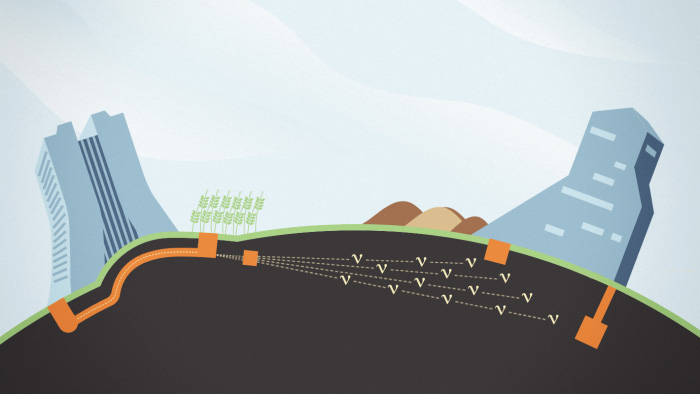Deconstruction: Long-Baseline Neutrino Experiment
 |
The Long-Baseline Neutrino Experiment aims to discover whether neutrinos violate the fundamental matter–antimatter symmetry of physics. Image: Sandbox Studio |
The U.S. Department of Energy has approved the conceptual design of a new experiment that will be a major test of our current understanding of neutrinos and their mysterious role in the universe. Scientists are now proceeding with the engineering design of the Long-Baseline Neutrino Experiment, which aims to discover whether neutrinos violate the fundamental matter-antimatter symmetry of physics. If they do, physicists will be a step closer to answering the puzzling question of why the universe is filled with matter while antimatter all but disappeared after the big bang.
So far, quarks are the only known particles that violate this fundamental symmetry. But the observed effect in quark interactions is not of the right kind to explain the abundance of matter over antimatter in our universe.
Scientists know that neutrino interactions also could violate matter-antimatter symmetry. If so, how strong is the effect? Scientists designed the LBNE experiment to discover the answer. They plan to break ground in 2015.
From around the world
The LBNE experiment will send beams of neutrinos and antineutrinos from the Department of Energy's Fermilab, 40 miles west of Chicago, to the Sanford Lab in the Black Hills of South Dakota. More than 350 scientists and engineers from more than 60 institutions have joined the LBNE collaboration so far. They come from universities and national laboratories in the United States, India, Italy, Japan and the United Kingdom. The collaboration continues to grow, and project leaders seek and anticipate further international participation.
Start on the prairie
Surrounded by 1,000 acres of tallgrass prairie, the accelerators at the Fermi National Accelerator Laboratory in Batavia, Ill., will produce beams of muon neutrinos and antineutrinos for LBNE. Every 1.3 seconds, an accelerator will smash a batch of protons into a graphite target to make short-lived pions. Strong magnetic fields will guide and focus the pions to form a beam that points toward the LBNE detector in South Dakota. The pions will travel a few hundred feet, decay and produce muon neutrinos and antineutrinos.
Read more
—Kurt Riesselmann
|